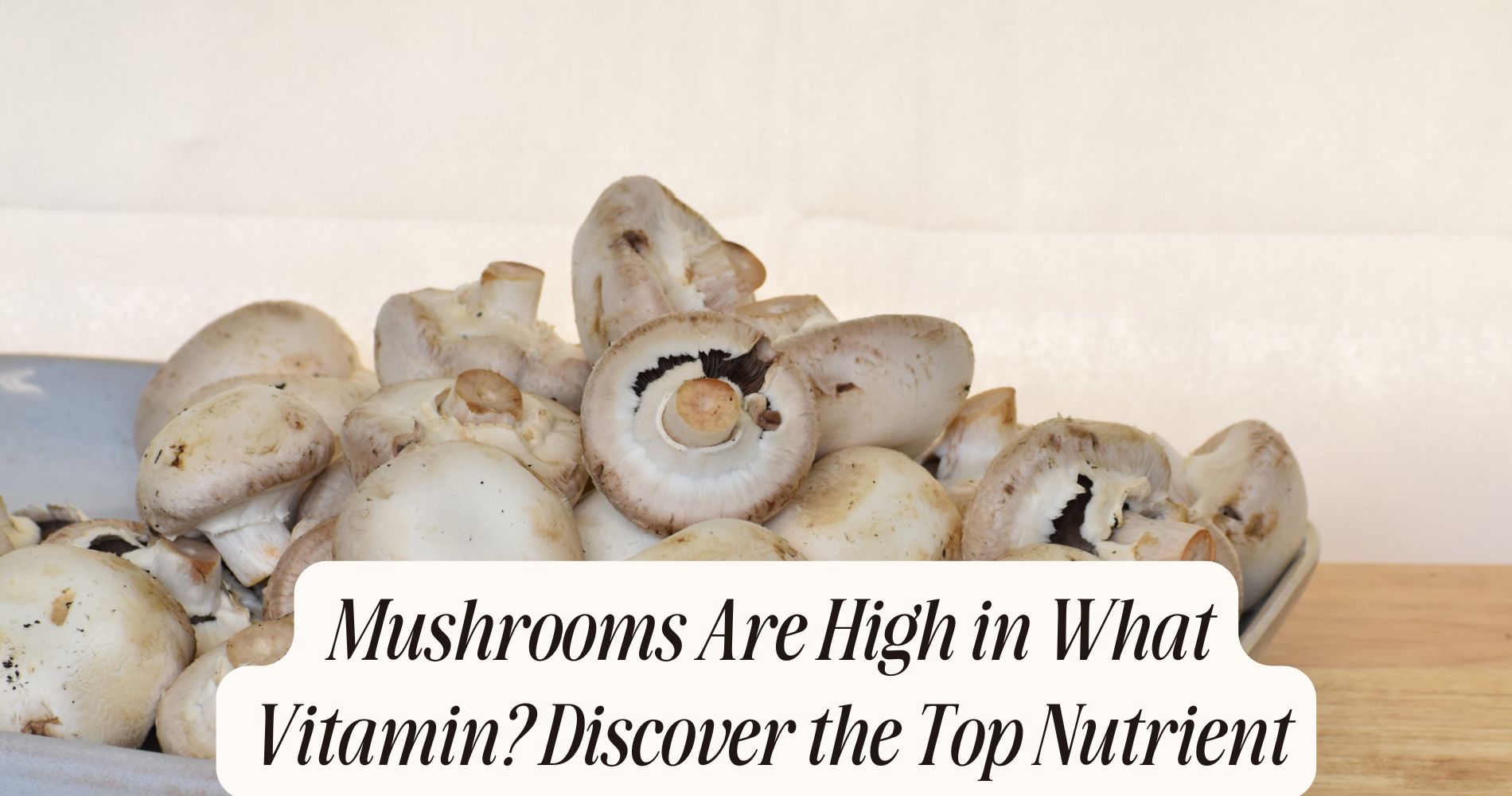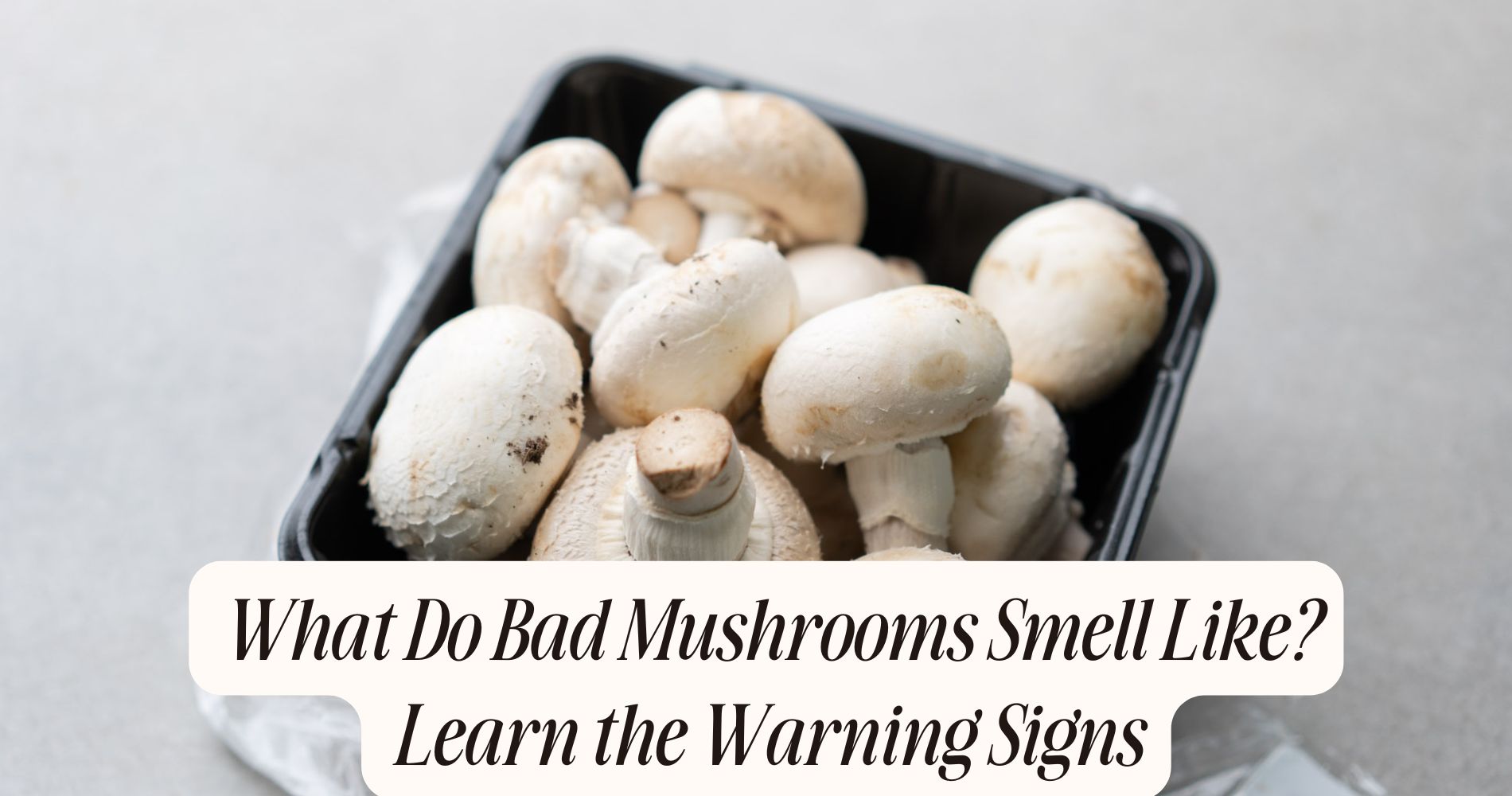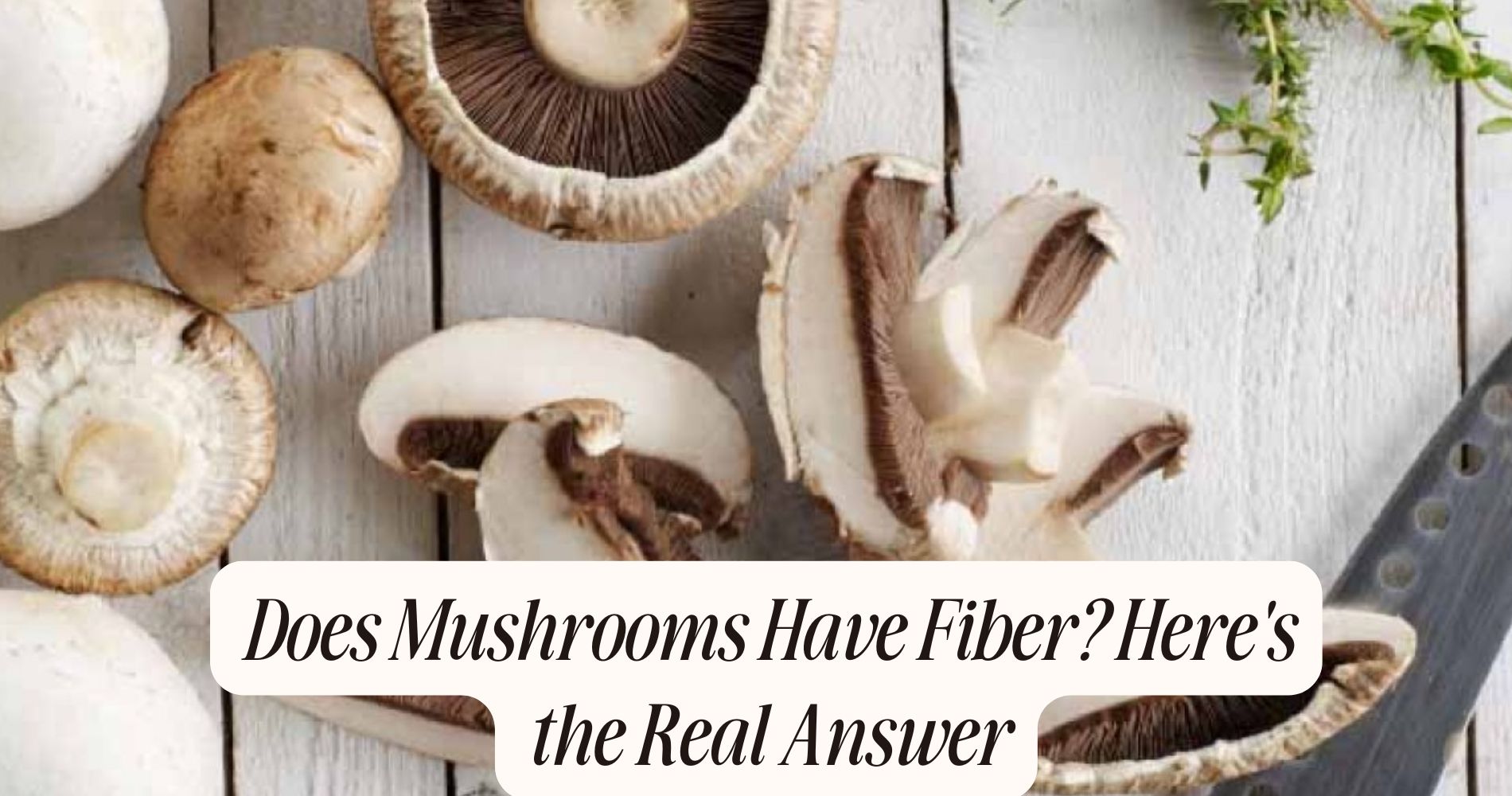
Mushrooms Are High in What Vitamin? Discover the Top Nutrient
Mushrooms are high in what vitamin? If you're looking to boost your vitamin D intake, mushrooms are one of the top plant-based sources you can add to your meals. Once they're exposed to sunlight or UV light, mushrooms naturally produce vitamin D2, which your body uses to help absorb calcium and support strong bones. Just half a cup of UV-exposed mushrooms can cover your entire daily vitamin D needs. Curious about the healthiest types and best ways to prepare them?
The Nutritional Profile of Mushrooms
Although mushrooms often get overlooked as a nutritional powerhouse, they’re packed with essential vitamins, minerals, and antioxidants. When you explore the world of mushrooms, you’ll notice impressive fungal diversity, from common white button to shiitake and maitake varieties. Each type offers a unique range of nutrients, but all mushrooms provide fiber, B vitamins, selenium, copper, and potassium.

Because of modern mushroom cultivation, you can access these varieties year-round, ensuring a steady supply of nutrients. Mushrooms are naturally low in calories and fat, making them a smart addition to your meals. They also contain important antioxidants, such as ergothioneine and glutathione, which help protect your cells from oxidative stress.
The Essential Vitamin Found in Mushrooms
When you add mushrooms to your diet, you’re getting a unique boost of vitamin D—a nutrient that’s often hard to find in plant-based foods. Mushrooms are one of the few non-animal sources naturally high in vitamin D, making them essential for anyone looking to improve their vitamin absorption without relying on supplements or animal products.
Scientific studies confirm that certain types of mushroom cultivation can further increase this valuable nutrient, especially when mushrooms are exposed to sunlight or ultraviolet (UV) light during their growth.
How Mushrooms Become Rich in This Vital Nutrient
Because mushrooms have a unique ability to convert sunlight into vitamin D, they become a valuable dietary source of this nutrient.
When exposed to ultraviolet (UV) light, mushrooms synthesize vitamin D2 through a process similar to how your skin produces vitamin D3 from sunlight. This transformation happens naturally in wild mushrooms, but it can also be optimized during fungi cultivation.
Producers may deliberately expose cultivated mushrooms to UV light after harvest, greatly increasing their vitamin D content. Their impressive nutrient absorption abilities allow mushrooms to accumulate significant amounts of this vitamin, especially when grown in environments designed to enhance UV exposure.

As a result, when you include mushrooms in your diet, you’re tapping into a unique, plant-based source of vitamin D made possible by both nature and cultivation techniques.
Types of Mushrooms With the Highest Vitamin Content
While not all mushrooms offer the same nutritional benefits, some varieties stand out for their exceptionally high vitamin D content. If you’re looking to boost your intake, focus on edible mushroom varieties like maitake, shiitake, and portobello. These mushrooms, especially when exposed to sunlight or UV light during mushroom cultivation, can provide significant amounts of vitamin D2.
Wild mushrooms generally contain more vitamin D than those grown indoors, but many commercial growers now use UV light to enhance vitamin levels in cultivated varieties. Among the top choices, maitake mushrooms are particularly notable, providing up to several hundred percent of your daily vitamin D needs per serving.
Health Benefits of This Key Vitamin
Choosing mushrooms rich in vitamin D doesn't just enhance your meals—it also supports your overall health in significant ways. Vitamin D helps your body absorb calcium, strengthening bones and teeth and reducing your risk of osteoporosis. It also plays a crucial role in immune function, helping you ward off infections more effectively.
Mushrooms and antioxidants work together to combat oxidative stress, which can lower inflammation and protect your cells from damage. Thanks to advanced mushroom cultivation techniques, growers can boost the vitamin D content in mushrooms by exposing them to UV light, making it easier for you to meet your daily needs.

Including these nutrient-dense mushrooms in your diet is a smart, natural way to support bone, immune, and cellular health every day.
Signs of Deficiency and Why It Matters
Even if you eat a balanced diet, you might still fall short on vitamin D, and the consequences can affect your health in surprising ways. A vitamin deficiency in D can lead to fatigue, bone pain, muscle weakness, and even frequent infections.
Since vitamin D helps your body absorb calcium, poor nutrient absorption can mean weaker bones and a higher risk of fractures. You may also notice mood changes, like feeling down or irritable.
Over time, low vitamin D impacts your immune function and can contribute to chronic health issues. Because vitamin D isn’t found in many foods, and sunlight exposure varies, it’s easy to miss your needs.
Knowing the signs of deficiency helps you take action before long-term problems develop.
Best Ways to Prepare Mushrooms for Maximum Nutrition
Because the way you prepare mushrooms directly affects their nutrient content, using ideal cooking methods guarantees you get the most vitamin D and other beneficial compounds. Research shows that grilling or microwaving mushrooms preserves vitamin D levels better than boiling or frying, which can leach nutrients into water or degrade them at high temperatures.
You’ll want to cook mushrooms briefly to maintain both their texture and nutritional value. When it comes to storage tips, keep mushrooms in a paper bag in the refrigerator to reduce moisture, which can cause spoilage and nutrient loss.
Avoid washing mushrooms until just before use, as excess water accelerates deterioration. By following these evidence-based cooking methods and smart storage tips, you can maximize the health benefits that mushrooms offer.
Comparing Mushrooms to Other Vitamin Sources
Maximizing the nutritional impact of mushrooms also means understanding how their vitamin content compares to other foods. Mushrooms, especially those exposed to sunlight or ultraviolet light during mushroom cultivation, are unique plant-based sources of vitamin D2—a nutrient rarely found in produce.
Unlike leafy greens rich in vitamins A and C, or dairy products high in vitamin D3, mushrooms provide a valuable option for boosting vitamin D intake, especially for those avoiding animal products.

When you eat mushrooms, your body’s vitamin absorption can vary depending on how the mushrooms are grown and prepared. Compared to fortified cereals or fish, mushrooms offer a natural, low-calorie source of vitamin D.
Including a variety of vitamin sources in your diet ensures you’re taking advantage of the distinct nutritional benefits each food offers.
Tips for Adding More Mushrooms to Your Diet
Whether you’re seeking a simple way to boost your vitamin D intake or diversify your nutrient sources, mushrooms make an easy addition to many meals. Start by exploring different cooking techniques—sautéing, roasting, or grilling mushrooms can enhance their texture and help retain their nutrients, including vitamin D.
For breakfast, add sliced mushrooms to omelets or scrambled eggs. Toss them into salads or stir-fries for lunch or dinner. Mushrooms pair well with flavors like garlic, thyme, soy sauce, and balsamic vinegar, making them versatile in a variety of dishes.
You can also blend finely chopped mushrooms into ground meat for burgers or tacos, increasing both nutrition and flavor. By using these strategies, you’ll successfully incorporate more mushrooms into your daily diet.
Myths and Facts About Mushroom Nutrition
As you find new ways to enjoy mushrooms in your meals, it’s important to separate nutrition facts from common misconceptions. Fungus folklore often claims mushrooms lack nutritional value, but that’s a myth. Mushrooms are rich in B vitamins—especially riboflavin, niacin, and pantothenic acid—and they’re the only plant-based food naturally high in vitamin D when exposed to sunlight.
Another common mushroom myth is that they’re high in calories or carbohydrates; in reality, mushrooms are low in both and make nutrient-dense additions to any diet. Some people also believe mushrooms don’t offer protein, but while they’re not protein powerhouses, they do contain small amounts.
A Smarter Way to Get Your Mushroom Nutrients
If you're intrigued by the vitamin power of mushrooms, SUPER MUSHROOM GUMMIES by Well Gummies offer a delicious and effortless way to enjoy the benefits. Packed with 10 functional mushroom types, these gum-chew form supplements are designed to support immune health, mental clarity, and balanced energy. With a wild berry flavor that rivals your favorite candy—minus the jitters or crash—they’re the perfect daily companion for wellness without the fuss.
Frequently Asked Questions
Can People With Mushroom Allergies Eat Vitamin Supplements Derived From Mushrooms?
If you have a mushroom allergy, you should approach supplement safety carefully. Mushroom-derived supplements may still trigger allergic reactions, since they can contain mushroom proteins. Always check labels, consult your doctor, and choose alternative nutrient sources.
Are There Any Toxic Mushrooms That Contain High Vitamin Levels?
You should know that some toxic varieties of mushrooms can have high vitamin concentrations, especially B vitamins and vitamin D. However, you must never consume them, as their toxins far outweigh any potential nutrient benefits or health gains.
Do Cooking Methods Affect the Taste of Mushrooms More Than Their Vitamin Content?
You’ll find cooking methods impact flavor preservation more than nutrient loss in mushrooms. Sautéing or grilling boosts taste, but most vitamin content, especially B vitamins, remains stable. Evidence shows mushrooms’ nutrients withstand heat better than their delicate flavors.
How Can You Identify Wild Mushrooms That Are Safe to Eat?
When practicing wild mushroom identification, always use multiple safe foraging techniques like consulting field guides, joining expert-led walks, and avoiding lookalikes. You’ll reduce risks and guarantee your finds are both nutrient-rich and safe to eat.
What Is the Environmental Impact of Commercial Mushroom Farming?
When you support sustainable farming in commercial mushroom production, you'll reduce ecological impact. Mushrooms use less water and land than many crops, recycle agricultural waste, and emit fewer greenhouse gases, making their nutrient-rich harvests environmentally friendly and responsible.
Conclusion
By adding more mushrooms to your meals, you’ll boost your intake of vitamin D—a nutrient many people lack. Mushrooms uniquely produce vitamin D when exposed to sunlight, making them a smart, plant-based option. They also provide other nutrients, but it’s their vitamin D content that truly stands out. Prepare and cook them properly to get the most benefit. Choose a variety, and you’ll support your health with this essential, evidence-backed vitamin source.




